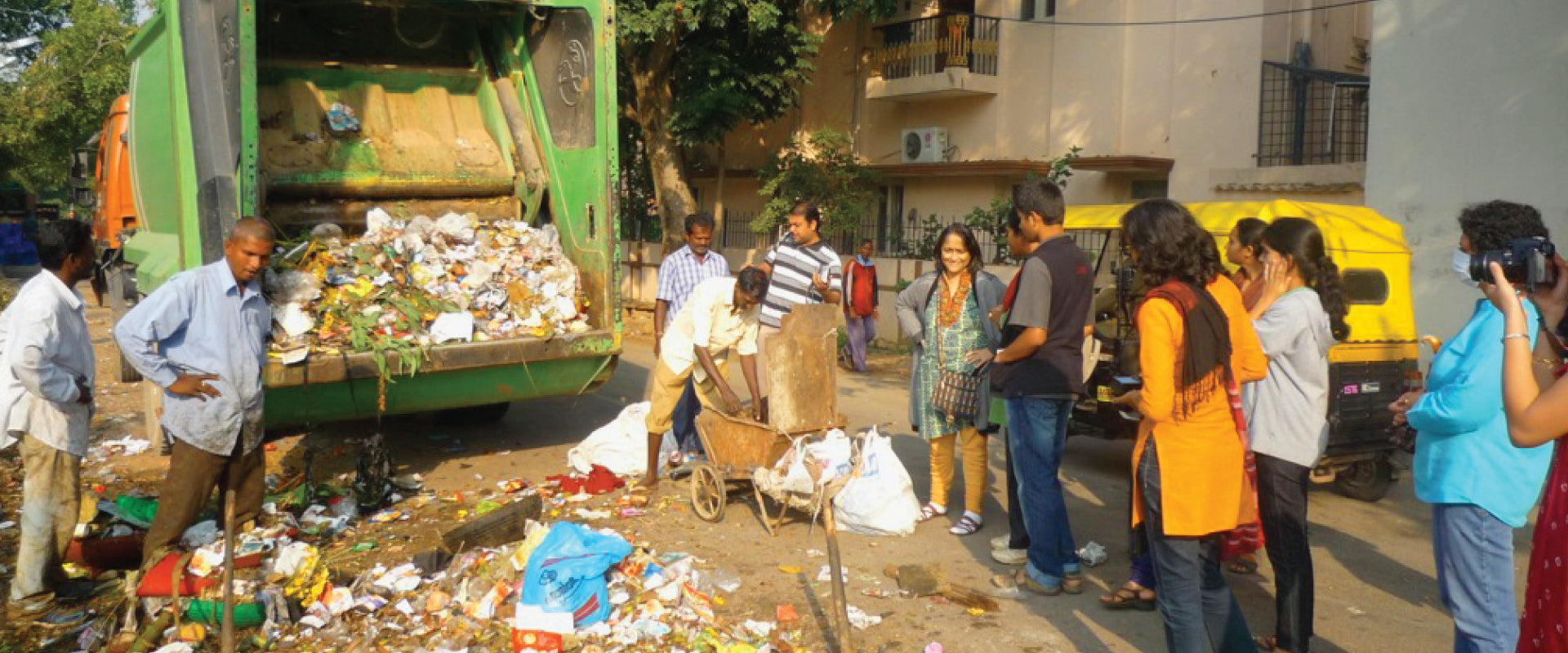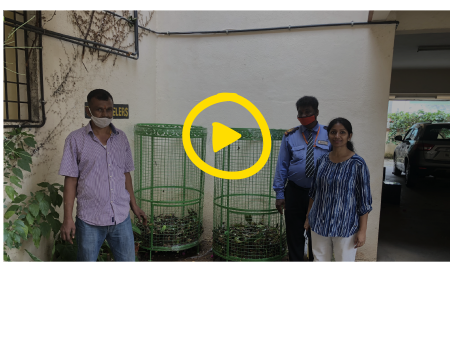Solving for a pattern | Daily Dump Blog

Ah, world, what lessons you prepare for us,
even in the leafless winter,
even in the ashy city.
I am thinking now
of grief, and of getting past it;
I feel my boots
trying to leave the ground,
I feel my heart
pumping hard. I want
to think again of dangerous and noble things.
I want to be light and frolicsome.
I want to be improbable beautiful and afraid of nothing,
as though I had wings.
Excerpted from Starlings in Winter by Mary Oliver
As part of an annual year-end ritual, I revisited this poem by Mary Oliver last week. Reading it on the heels of 2020 felt particularly resonant, speaking as it does to uncertainty, loss and grief, but also to the desire for new beginnings that the change of a calendar year often invokes. It reminded me of the many conversations I’ve had with friends and family over the weeks and months of the lockdown in India. With access to the usual distractions cut off, the enforced pause and uneasy silence of a world that had ground to a halt had made room to bring up questions around meaning and purpose: What is essential? What does well-being mean? How is it something I can live and practice each day especially in the face of a collapse of the world as I’ve known it?
Over the course of the year, I found myself trying to unravel some of these questions in the company of others who were also grappling with them. So when Daily Dump reached out to invite us to write a guest post on what we hope 2021 will bring, I found myself returning to the discomfort of the lockdown and what was being birthed through it. I recalled how through the worst of the anxiety, I found solace (almost inadvertently) in small, everyday action—tending to the plants on my window ledge or going up to the terrace of my building to gaze up at the sky. A classmate from university who I had not been in touch with in years reached out to share photographs of her composting journey with her three little daughters; another was tracing the patterns of leaves and flowers in her journal that she chanced upon when she set out on a walk. In Bangalore, my mother started growing greens in her lush balcony garden which in turn led me to try the same with mustard seeds. Alongside the deep distress wrought by the lockdown were also stories of people coming out to cook together to feed the thousands of migrant workers who were walking back to their villages, shunned by the state. Others were stepping out to care for street animals who were left without access to food.
In each of these interactions, despite the deep discomfort of not knowing what the next day would bring, there was also an implicit understanding of what is important and essential. Solace was found in reinforcing relationships with the natural world and through acts of care for each other. Suddenly, the central role they played in my well-being, in feeling grounded and able to breathe through moments of anxiety also became imminently clear. Was it really a coincidence then that the year also saw a surge in balcony birding, gardening or people turning to their neighbourhood trees and plants for comfort? Or that new, creative ways were emerging to establish connection when physical distance could not be breached?
When I think of all these seemingly small actions, I’m struck by their capacity to sustain and connect with something larger than ourselves. An article in Psyche Magazine speaks to this idea of integration: Creativity is often associated with the idea of a lone creative genius, an individual who not only excels at what they do, but also transforms the world in the process. The Zhuangzi (莊子), a classical Chinese philosophical and literary text, provides a different perspective. In one interpretation, creativity isn’t conceived as aiming at novelty or originality, but rather integration. Instead of aiming at something new, it aims at something that combines well with the situation of which it’s a part […] focusing on integration could encourage us to better understand creative agents as being intimately connected with, and products of, their environments. This would broaden our notion of creativity in a way that might allow us to see creativity demanded in a greater range of activities.
I’m drawn to this idea of integration—the almost revolutionary potential it holds in offering space for finding creative solutions to some of the biggest challenges that face us as a species. It means that each of us through our actions and choices in every moment have the power to integrate and connect with the kind of world we would like to inhabit. A world where all species and habitats are accorded the same respect and right to life we would ourselves like to receive.

In some cases, like the Edible Schoolyard Project that was started by chef and author Alice Waters in Berkeley, California, it meant transforming a vacant lot in a city into a garden where students, teachers and the community came together to reclaim a patch of their city. It is now a place where students are farmers, cooks, learners and teachers. The process has in turn led to explorations of how culture and identity shape personal relationships and access to food. So what might have begun as a gardening project for children to learn where food comes from has now become embedded in how children connect with it. An experience that integrates with other facets like the cycles of life, biodiversity and renewal. Frances Moore and Anna Lappé write in Hope’s Edge, ‘What stops us from change? Why isn’t a garden in every school deemed as essential as, say, physical education?’ By solving for pattern (a term used by poet, farmer and environmentalist Wendell Berry) rather than for the pieces, it becomes possible to grasp the power of connection between seemingly disparate problems. He writes, ‘A good solution is good because it is in harmony with those larger patterns […] the way a healthy organ acts within the body.’
To look at this from a household level, what might seem like a simple act of carrying empty bottles to a local kirana shop for a refill of staples, becomes part of a larger story of choosing a different relationship to how we consume, how much plastic waste goes into a dustbin and what the wastecollector has to sort through. Or starting to grow spinach and herbs on a window ledge can turn attention to seasonal foods and eating in tandem with them. Each decision part of a larger pattern, shifting and changing the shape of what is to come.When I think of what this year might bring, I hope for deeper connections and richer integration with the world we live in. To me, that’s what it means to sustain—to give support and to nourish. Living sustainably, by extension then, is to inhabit discomfort and from that place, to choose to live in ways that celebrate how deeply connected we are to each other and the planet that holds us. I hope that as the year unfolds, you will embrace the many ways in which to integrate with the larger world, from the food you eat to turning it into sweet smelling soil, all right from your home. Not because sustainability is a new buzzword, but because it’s solving for pattern.




